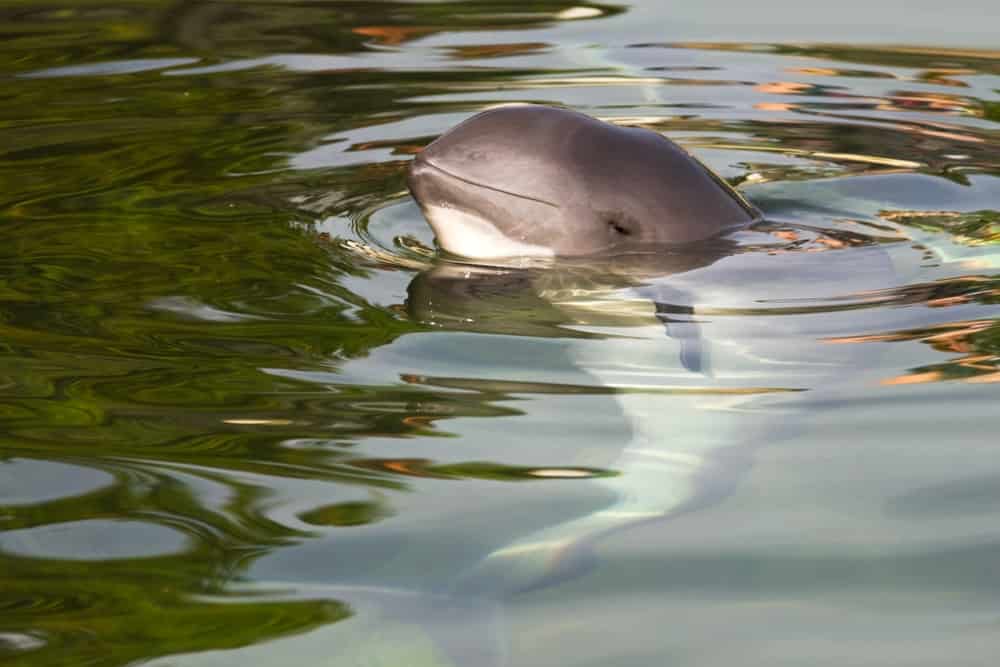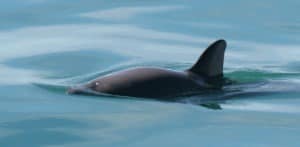There are millions of animals in the world, roaming the land and the sea, and there are still more fascinating creatures being discovered. But did you know that there is one small species of porpoise that is fighting hard just to survive? There are only a handful of these animals left in the world and they are teetering on the brink of extinction. Meet the vaquita — the rarest animal in the world.
What Are Vaquitas?

Vaquitas are small porpoises that are endemic to the Gulf of California. They have a very small range and live only in the northern region of the Gulf of California, known as the Sea of Cortez. This is within an area that is only 1,519 square miles. They do not live anywhere else in the world.
Vaquitas are the smallest species of porpoise and also the smallest cetacean in the world. They have a maximum length of five feet, with females being larger than males. However, males have larger dorsal fins. Vaquitas have a distinctly rounded head with no distinguishable beak. They also have black rings around their eyes and black patches on their lips which then become a line going toward their pectoral fins. Vaquitas are dark grey but have lighter bellies which are usually a whiteish-color with light grey markings.
Unlike other porpoises, vaquitas do not typically live in pods. Instead, they are most often either in pairs or alone. They have a fairly broad diet and prey on a variety of crustaceans, small fish, squid, and octopus.
Why Are Vaquitas So Rare?
It is currently estimated that there are only ten vaquitas left in the world. Incredibly, vaquitas were only discovered in 1958, but even then the population was not substantial.
In 2007, it was estimated that there were 150 vaquitas left, but by 2018 this figure had dropped to as low as 19. Vaquitas are classified as Critically Endangered, and right now there is a very real chance that in just a few years these beautiful creatures will be completely extinct. But why are they so rare? Let’s take a look at the main factors below.
Entanglement

The main risk to vaquitas is entanglement in fishing nets.
©Tharuka Wanniarachchi/Shutterstock.com
There are a few reasons that vaquitas are in such a perilous position, but the biggest factor is down to us — fishing. Fishing operations, both small-scale and commercial, are widely active in the Gulf of California, and unfortunately, these small porpoises often become entangled in the fishing nets, resulting in their deaths.
Totoaba are some of the most commonly caught fish within the vaquitas’ range, despite themselves being a Vulnerable species. Vaquitas become caught in the gillnets that are used to catch the totoaba, and this is considered to be one of the main reasons that the population of vaquitas has declined so rapidly.
It is illegal to catch and trade totoaba, thanks to the Convention on International Trade in Endangered Species of Wild Fauna and Flora (CITES). However, due to high demand in China, illegal fishing of totoaba is rife and subsequently continues to endanger the vaquitas. However, fishing for other species of fish also plays a part as well.
Low Reproductive Rate
Another factor that puts vaquitas at risk is their low reproductive rate. Vaquitas reach sexual maturity when they are three to six years old. However, they only give birth to a single calf every two years. This means that they reproduce very slowly, a fact exacerbated by the small number of breeding females that are alive.
Pollution
Another factor affecting vaquitas, albeit to a much lesser extent, is pollution. As vaquitas live in fairly shallow water close to coastlines, their habitat is sometimes polluted by things such as pesticides that have entered the water. The vaquita is also at risk of becoming sick by ingesting it.
Can Anything Be Done to Save Them?
Vaquitas are currently protected under CITES, and parts of their home range are classed as a “World Heritage Site in Danger”. However, the only way that the vaquitas can be saved is by implementing a blanket ban on the use of gillnets in the Gulf of California.
Currently, they are banned in areas where vaquitas are known to inhabit, but conservationists are calling for this ban to be extended to their entire range and for the ban to be better policed. Furthermore, it is important to clamp down on the illegal fishing of the totoaba, not only by enforcing the ban but also by stopping the illegal export of the meat.
Additionally, the World Wildlife Fund (WWF) is working with various committees to create fishing practices that are safe for the vaquita. This includes finding an alternative solution to the use of gillnets.
How successful these measures will be is as yet unknown, but we can certainly hope that they will at least give these incredible porpoises a fighting chance at survival.
The photo featured at the top of this post is ©
Thank you for reading! Have some feedback for us? Contact the AZ Animals editorial team.






